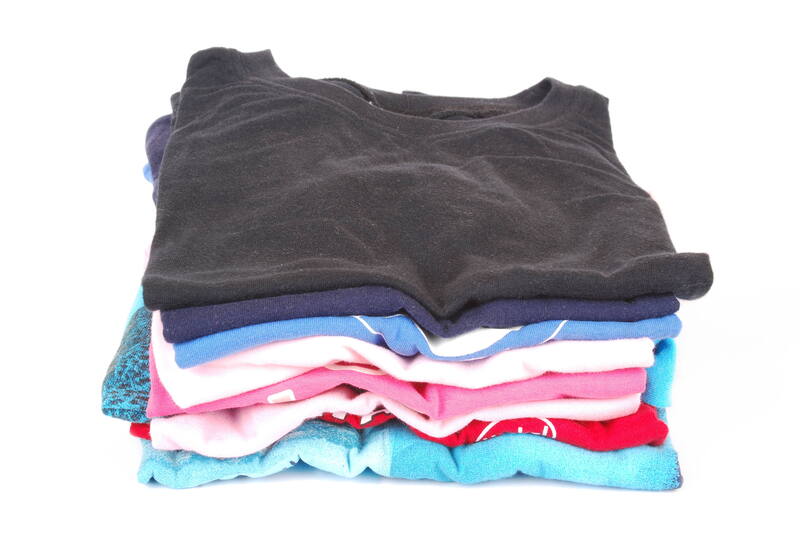Navigate the World of Recycling: Expert Tips for Home Efficiency
Recycling isn't just tossing waste into a different bin--it's an active, ongoing commitment to environmental stewardship and home efficiency. In an era where sustainability is at the forefront of global concerns, navigating the world of recycling has become increasingly critical. If you're ready to boost your home's efficiency and genuinely make a difference, this comprehensive guide provides expert tips to optimize recycling efforts at home, tailor routines, and foster eco-friendly habits.
Why Recycling Matters: The Environmental and Home Impact
Understanding the importance of recycling is the first step. Every year, humans produce over 2 billion tons of waste globally, and improper recycling leads to overflowing landfills, pollution, and depletion of natural resources. But when you recycle efficiently at home, the positive impact is immense:
- Reduces landfill waste: Less garbage means less space needed for landfills.
- Saves energy: Recycling consumes less energy compared to creating products from raw materials.
- Conserves resources: Materials like paper, metal, and plastics are reused, preserving forests and minerals.
- Lowers pollution: A reduction in waste leads to fewer pollutants released into the air and water.
The Connection Between Home Efficiency and Recycling
Home recycling isn't just about separating plastics from paper. Efficient households use strategic recycling methods to reduce clutter, save money, and support a healthier environment. When done correctly, it streamlines cleaning routines and simplifies waste management.

Getting Started: Setting Up a Home Recycling System
Creating a comprehensive recycling system is the cornerstone of success in the world of recycling. Here's how you can set up your home to maximize convenience and efficiency.
Step 1: Audit Your Waste
- Track a week of trash: Monitor and list the types of materials your household discards most frequently--glass, aluminum, paper, cardboard, plastics, food scraps, and more.
- Identify recyclables and non-recyclables: Familiarize yourself with local guidelines, as rules vary between municipalities.
Step 2: Organize Your Space
- Designate recycling stations: Place distinct bins for each recyclable material--ideally in high-traffic areas like the kitchen, garage, or mudroom.
- Get clear signage: Labels help prevent confusion and keep the system running smoothly for all members of the household.
- Choose space-efficient bins: Stackable or under-counter containers save room and blend seamlessly with your home's design.
Step 3: Make Recycling Accessible for All
Children, guests, and busy family members are more likely to recycle when it's convenient. Use color-coded or pictorial labels and keep bins visible and easy to use. Regular reminders and gentle encouragement can turn recycling into a habit, not a chore.
Expert Tips for Efficient Recycling at Home
Ready to streamline your recycling? These expert recycling tips will maximize the impact of your efforts and help avoid common pitfalls.
1. Know Your Local Recycling Rules
Every community has unique guidelines--some accept all numbered plastics, while others don't; some require rinsed containers; some offer curbside pickup for glass, while others don't. Always check:
- The accepted materials list on your city's or waste company website.
- Pick-up schedules and whether you must separate materials.
- Drop-off locations for hazardous or rare items (batteries, electronics, styrofoam, etc.).
2. Clean and Dry Your Recyclables
Food residue contaminates recycling batches, sometimes sending whole loads to the landfill. Always rinse cans, bottles, and jars thoroughly. Let them dry before tossing them in the bin to prevent mold and odors.
3. Avoid 'Wish-Cycling'
Wish-cycling is when you put items in the recycling bin, hoping they'll get recycled--even if they aren't accepted. Common wish-cycled items include:
- Plastic bags and film (these require special drop-off)
- Greasy pizza boxes (the oil contaminates paper recycling)
- Polystyrene (styrofoam)
- Wire hangers
- Broken glass
When in doubt, throw it out, or check local guidelines.
4. Flatten Boxes, Stack Smart
- Cardboard boxes take up a lot of space. Break them down completely to maximize bin capacity and make curbside collection easier.
- Nest jars or cans of similar size together before disposing to conserve space.
5. Compost to Reduce Food Waste
Food makes up over 20% of landfill waste in many areas. Composting not only saves space in your trash and recycling bins but also produces rich soil for your garden:
- Start with a small kitchen compost bin for produce scraps, coffee grounds, and eggshells.
- Transfer to an outdoor compost pile or bin.
- Avoid composting meats, oils, and dairy to prevent odor and pests.
6. Recycle Beyond the Curbside
If you want to go further with recycling, discover specialty programs and drop-off locations for:
- Batteries and light bulbs
- Electronics (e-waste)
- Pharmaceuticals
- Textiles and clothing
- Paint, chemicals, and hazardous waste
Creative and Effective Home Recycling Ideas
Recycling doesn't always have to mean sending items off for reprocessing. Upcycling and creative reuse can further reduce waste:
Repurpose Before Recycling
- Glass jars become storage for snacks, spices, or crafting supplies.
- Cardboard tubes are perfect for cord organizers or kid-safe paint rollers.
- Old t-shirts make excellent cleaning rags.
Before trashing or recycling an item, ask yourself: Can I use this for something else?
Shop with Recycling in Mind
- Choose products with minimal packaging or packaging that is easily recyclable locally.
- Opt for products made from recycled materials to close the recycling loop.
Get the Whole Family Involved
Make recycling a fun, educational activity. Here are ways to encourage kids and roommates:
- Create contests for who recycles the most (by weight) per week.
- Allow kids to decorate recycling bins or bins for special collection drives.
- Host DIY craft sessions using old magazines, bottles, or boxes.
Common Recycling Mistakes and How to Avoid Them
- Bagging recyclables: Transparent plastic liners may hinder sorting. Most programs want items loose in the bin.
- Ignoring the lids and caps rule: Local rules vary--some accept bottle caps, others want them removed. Learn your program's preference.
- Including dirty containers: Even minimal food residue can spoil a whole batch.
- Recycling shredded paper incorrectly: Many curbside programs don't accept shredded paper--it's often better to compost it or bring to special collections.
Maximize Efficiency: Advanced Tips for the Enthusiastic Recycler
Embrace Digital Solutions
- Use apps like iRecycle, Recycle Coach, or your city's waste management app to receive reminders, track schedules, and search recyclable items.
- Research recycling maps to find drop-off locations for electronics and hazardous waste in your community.
Buy Recycled, Reuse Often
- Support the market for recycled goods by choosing notebooks, packaging, and building materials labeled as post-consumer recycled content.
- Invest in high-quality reusables--water bottles, beeswax wraps, silicone food storage, etc.--to cut down on single-use items.
Join or Start Community Initiatives
- Participate in neighborhood recycling drives, repair cafes, or swap meets.
- Educate and inspire neighbors by sharing tips and resources on local forums or through social media groups.
The Future of Home Recycling: Trends and Innovations
The world of home recycling is constantly evolving. Here are some key trends you should watch for:
- Smart bins that sort items using AI and sensors.
- Compost pickup services expanding to more urban and suburban neighborhoods.
- Recycling incentive programs--like deposit refunds or rewards for zero-waste households.
- Circular economy initiatives promoting repair, reuse, and sharing over single-use consumption.
Staying informed ensures your efforts are always making the maximum positive impact.

Expert Q&A: Addressing Your Top Recycling Questions
Q1: What do I do with plastic bags?
A: Most curbside programs don't accept plastic bags. Collect them and take to large retail stores offering bag recycling drop-off. Even better--switch to reusable totes whenever possible!
Q2: Can I recycle pizza boxes?
A: If the box is greasy, it can't be recycled. Tear off clean portions and recycle those; compost the rest.
Q3: Is recycling really effective?
A: When done correctly, yes. Careful sorting and cleaning maximize the chances your recyclables end up remanufactured into new products.
Q4: How can I recycle electronics?
A: Never put electronics in your curbside bin. Search for e-waste collection events or drop-off points at electronics stores, recycling centers, or local government facilities.
Conclusion: Become a Home Recycling Champion
Navigating the world of recycling at home can seem daunting at first, but with a strategic setup, accurate information, and a dash of creativity, it can soon become second nature. Simple practices like organizing your bins, educating your household, and staying updated on the latest recycling rules will empower you to make a positive and lasting impact--both for your family and for the planet.
Remember: Efficiency in recycling is a journey, not a destination. Each small step you take at home is a stride towards a cleaner, more sustainable future for us all. Happy recycling!